Project 1: Page Numbers
- Last time we built worked proposal report.
- We are working with the 2019 Chicago Movies in the Park Dataset.
- The data is from here
- A supporting page is here
- I have never found a good reference for what we are doing today.
- Page numbers range from simple to complex.
- Word's default behavior puts a number on every page.
- More complex documents have more complex needs.
- This is where it becomes more of a challenge.
- This is an attention to detail problem.
- Page numbering should be among the last tasks performed when finishing a document.
- Let's look at the page numbering in our book.
- There are no page numbers on the cover, and the first few pages.
- In fact, the first numbered page is the Table of Contents at a Glance, and that starts at v
- Numbered in roman numerals
- Notice that does not count the cover
- This first numbered page is at the bottom right hand corner.
- Page vii, the beginning of the Table of Contents is again an odd page.
- Notice that page viii is numbered in the upper left hand corner of the page.
- Notice that page ix is numbered in the upper right hand corner of the page.
- The start of the book
- Numbered in Arabic numerals
- The first page is always an odd page (on the right hand side) and is numbered differently
- The other pages are numbered at the top, right and left.
- Page numbers are placed in a header or a footer.
- There are a number of ways to do this
- Move to the page that begins with the table of contents. This is the second page of the document.
- Double click in the area where the header should be.
-
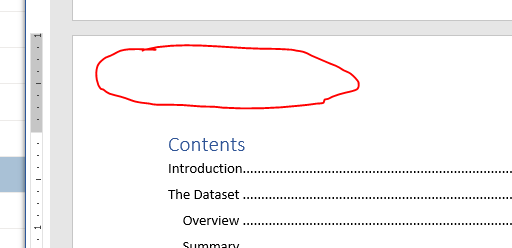
- This will
- Enable editing in the header and footer areas
- Disable editing in the main portion of the document.
- Bring up the Header & Footer Tools special tab.
-

- Notice it also informs us of the "section location" in the document.
- You can use the header and footer tools to place items in the header and footer of the page.
- Let's add a page number at the upper right hand corner of the document.
- This is great for one sided printing, with a staple in the upper left hand corner.
- On the Header & Footer command group drop down the Page Number menu
- Select Top of Page then Plain Number 3
-

- You should now have a page number at the top of the page.
-

- Close the header/footer editing by
- Clicking on the big red x
- Or double clicking in the normal text portion of the document.
- Notice editing headers is disabled.
- Scroll through the document
- There is no page number on the title page. This is good.
- But there are no page numbers on pages 3-5 either. This is bad.
- You use section breaks to control the behavior of page numbers.
- Each portion of a document where you want page numbers to be formatted differently should be at the star of a section.
- What do you think the difference is between
- Next Page section break
- Even Page section break
- Odd Page section break
- Remember we used sections to:
- Make the intro multi columned.
- Change the orientation in the sample data section.
- In fact, if you enter edit header and footer mode you will see that our document is composed of five sections:
- The title page and the first part of the first page.
- The section for the introduction.
- The second part of the first page that is in single column mode
- The Sample Data page
- The remainder of the document.
-
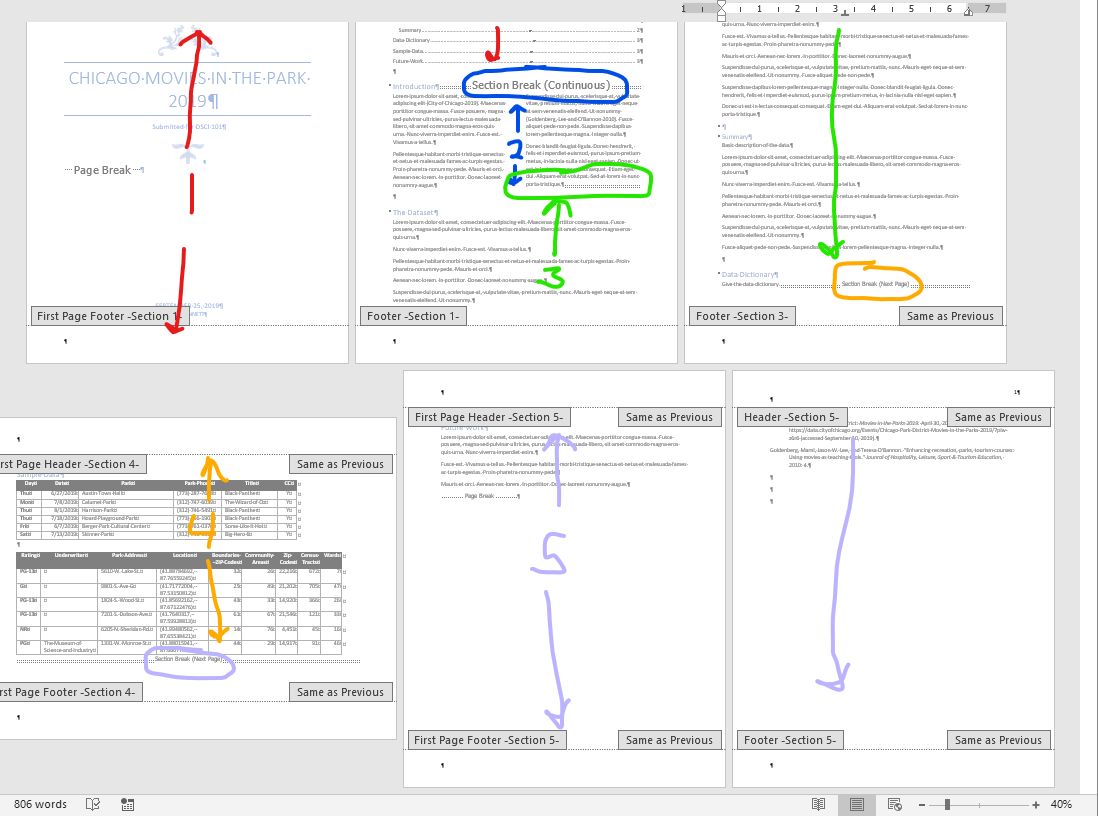
- So what went wrong with our page numbering?
- It is a little complicated because we are using breaks for two different things.
- Marking changes in things like orientation and column
- Controlling page numbers
- This is further complicated by the page numbering options.
- In Edit Header Footer mode notice the Options command group.
-

- Since we used a cover page Different First Page is turned on
- This is to keep a page number from showing up on the cover page of the document.
- But this means every time we start a new section, the first page will be different.
- Which is the case for sections 4 and 5
- Section 3 is just confused.
- If we turn this off
- sections 4 and 5 might be good
- Actually this is not the case due to the continuous break.
- but we will have a page number on the first page.
- Try it!
- A second complicating factor is Link to Previous
- To make things easy, Link to Previous is almost always turned on.
-
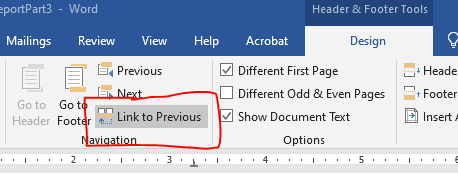
- This is what got us on sections 4 and 5.
- They copied the previous page numbering setup.
- No page number on the first page.
- Page numbers start at 0
- To see the last setting
- Go to the Page Number dropdown in the Header & Footer command group of the Header & Footer Tools special tab.
-
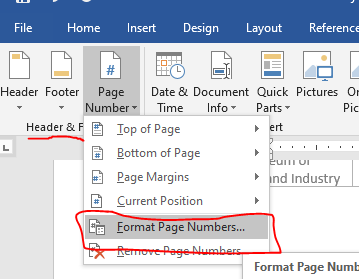
- Select Format Page Number
- Notice the settings in the Page Number Format dialog box.
-
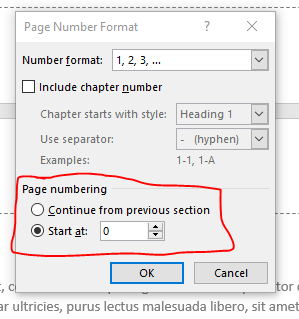
- If we change this to be Continue from previous section it fixes the problem.
- It looks to me like we can go through and fix the document by making these changes.








